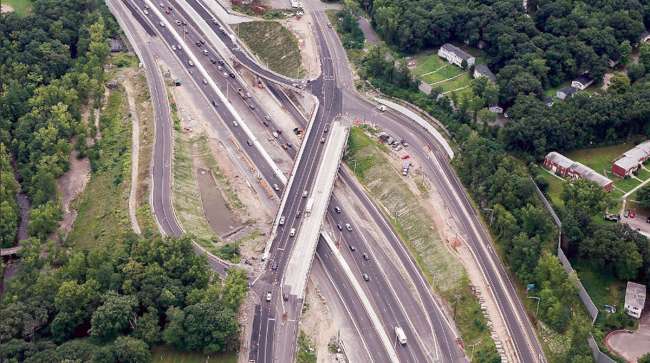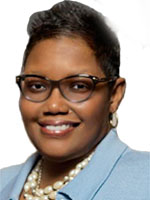Staff Reporter
National League of Cities Offers Guide on User Fee Programs

Local leaders interested in testing programs that assess a fee to those using their roadways now have a guide.
The National League of Cities published on March 11 its report “Fixing Funding by the Mile: A Primer and Analysis of Road User Charge Systems,” which makes the case that states and cities should explore such fundraising mechanisms.
Road user charge (RUC) programs base fees on the number of miles driven rather than the gallons of fuel their vehicles consume.
Fixing Funding by the Mile by on Scribd
The league advocates for 19,000 cities, towns and villages that represent more than 218 million residents.
“Having safe, reliable infrastructure is a priority for every single local leader,” said Karen Freeman-Wilson, president of the National League of Cities as well as mayor of Gary, Ind. “Investing in infrastructure means investing in the people in our communities. By piloting new technologies like road user charge systems, local leaders have the opportunity to find ways to sustainably and equitably fund infrastructure.”
RUC pilot programs often take the form of vehicle-miles-traveled systems or miles-based user fees. Some states have pursued such programs to counterbalance the flagging federal Highway Trust Fund, which helps states with construction and maintenance projects.

Freeman-Wilson
The league estimates that the Highway Trust Fund will be insolvent by 2021 as it relies heavily on the federal fuel tax — stagnant at 24.4 cents a gallon for diesel and 18.4 cents a gallon for gasoline since 1993 — even as there have been improvements to vehicles that make them more fuel efficient. Also, shifting driving habits contribute to the account’s steady decline, prompting several general fund transfers in recent years to maintain its solvency.
The National League of Cities said gas tax revenue will continue to drop as electric vehicles become more prevalent, estimating that by 2025 some 14% of vehicles could be electric.
The report maintains that cities with heavy congestion would serve as good testing grounds for RUC programs. It also mentions that state and local government agencies can switch to RUC systems faster than the federal government can develop broad policies for such programs.
“The mobility landscape is changing: driverless cars, electric vehicles, e-scooters and even robots are coming to our streets. But we still haven’t fixed our nation’s infrastructure,” said Brooks Rainwater, director for the group’s Center for City Solutions. “We all deserve safe roads and bridges, clean drinking water and access to broadband. Ultimately, city leaders will be the ones to usher in the innovative, forward-looking systems to get us there.”
The report offers case studies of some of the RUC pilots throughout the country. One example is the I-95 Corridor Coalition and Delaware Department of Transportation’s joint miles-based user fee program that originated in Delaware and Pennsylvania and has expanded through partnerships in North Carolina, New Jersey and Virginia.
Phase 1 of the I-95 Corridor Coalition’s program, which took place in Spring 2018, included a pilot test of a miles-based user fee with more than 155 participants, including DOT officials, legislators and other stakeholders along the East Coast.
Patricia Hendren, executive director of the I-95 Corridor Coalition, said Phase 1 helped participants develop a better awareness of how much they pay in fuel taxes to maintain roads. After receiving the invoice of the estimated amount of state fuel tax they had paid, 31% of pilot participants thought they actually paid more.
Robots are changing how we live: With the advent of #driverless vehicles comes new possibilities for funding cities’ transportation. Learn more about mileage-based user fees with our new guide: https://t.co/RxComjifRg #RebuildWithUs #NLCCCC pic.twitter.com/g4qIsfDPYT — National League of Cities (@leagueofcities) March 11, 2019
Phase 2, which started in October and will include 59 trucks from four motor carriers, is a multistate truck pilot to explore whether current regulations and technology can serve as a framework for miles-based user fees.
The report profiled the California Department of Transportation’s nine-month miles-based user fee pilot that included both passenger vehicles and heavy trucks. Caltrans’ pilot included 55 heavy trucks, some of which engaged in interstate travel, and ran from July 2016 through March 2017.
The miles-based user fee system requires technology to tabulate how far a vehicle has traveled, information that helps determine how much a vehicle is charged. The league’s report acknowledges this type of technology can raise concerns over privacy and security. The report encourages local leaders who are considering RUC programs to make projections for administrative costs, earn support from state lawmakers, survey public opinion and provide members of the public with options for the technology used for the program.
“Ultimately, by understanding public opinion, pilot projects can create communication efforts to educate the public about RUCs and establish public trust,” the report states.

